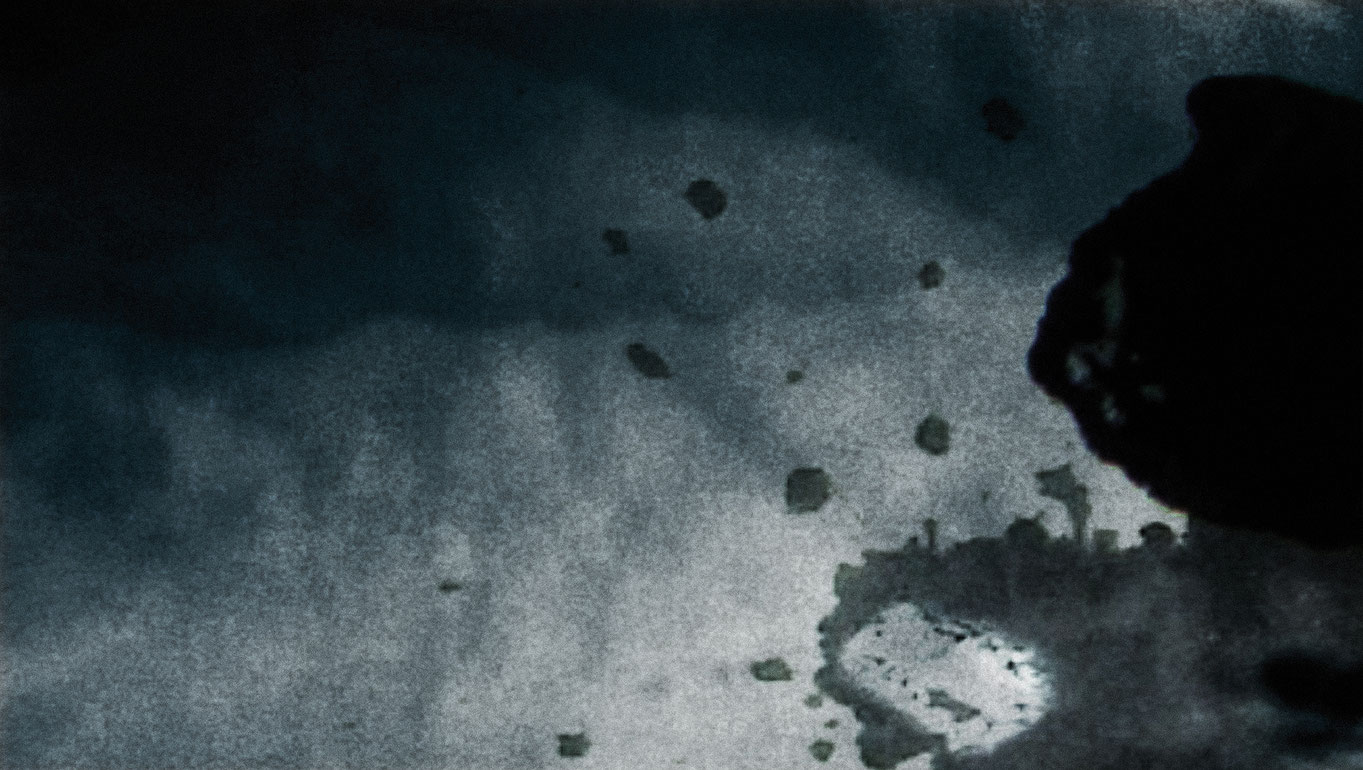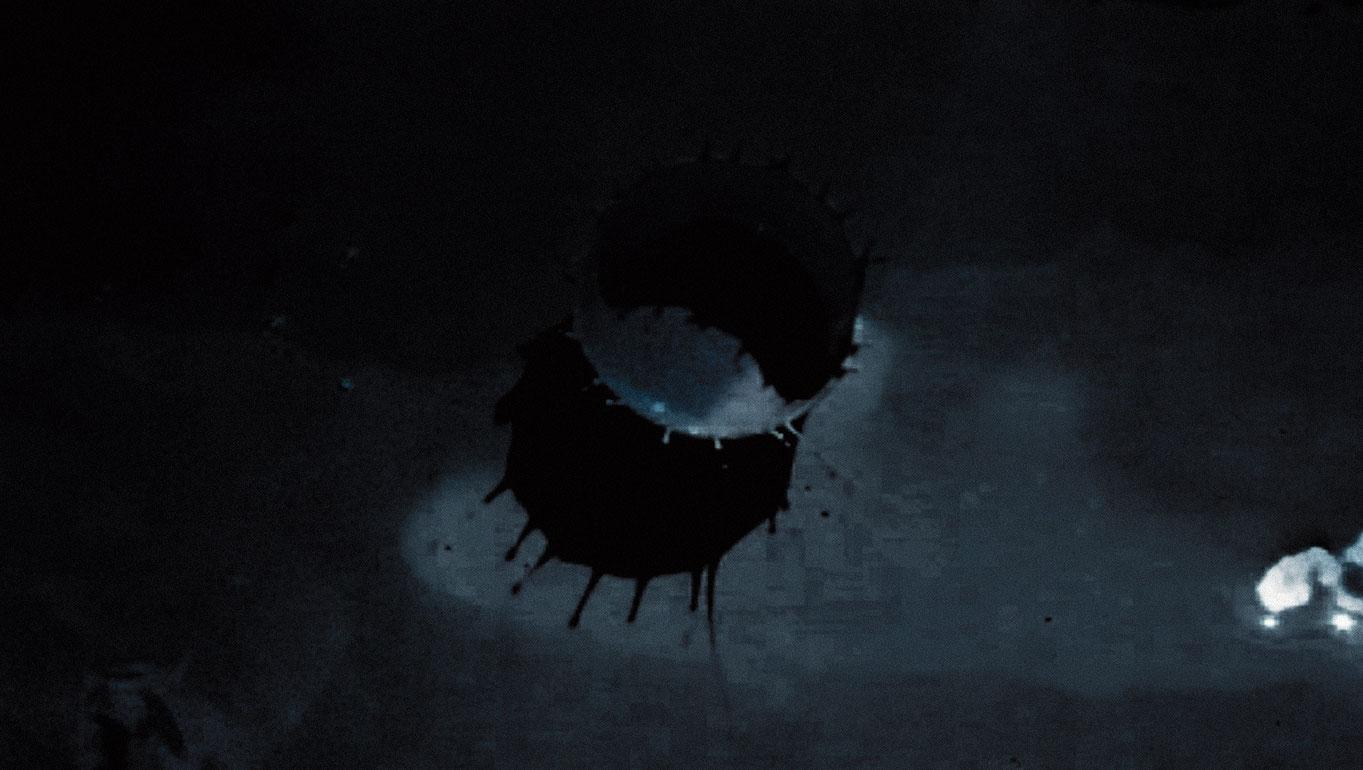KOI
KOI is a rhythmical arrangement of residual thoughts and images of a short moment: A look into the semi-cloudy, tranquil water of a pond. Koi (Nishikigoi, literally brocaded carp") enter the picture by turns and from different sides, the shadow of the bathing jetty and reflections make their appearances. This retrospective silent-film unfolds to the deep bordun/drone sounds of Stefan Neméth's composition and elements of a second moment begin to emerge: drops of dark liquids, paper textures, dripping sounds. The music adds spatial depth and expanse to these images, magnifies visual effects, calls them into question through delayed responses, and occasionally follows its own, separate ways in parallel worlds of sound.
More and more, it appears we are looking on from behind a glass pane; and in the course of repetitions, sequences seem to morph into glimpses of a different time: The one we inhabit behind closed eyes, where perception, reflection, and memory are no longer faced with the Other or subjected to control and, of their own accord, begin to apply their own laws and logic. As the movie progresses, natural media" as, for instance, the reflective surface of the water blend with film techniques such as stop motion, fade-over, and flashback, as well as layers and textures used in image processing. Thus, it renders visible not only the spectrum of changes analog images can undergo in the digital realm, but also how they, in turn, shape and change our impressions, how our visual perception begins to adopt and assimilate these very same tools. At the same time, these props are, therefore, also protagonists in a narrative: The continual recursive processing and manipulation of picture material is also a dramatization of mental and cognitive processes. And the rhythmic reanimation of imagery shows it continually changing between these roles, acquiring meaning and losing it again, reshaping and changing its connotations. What emerges in the course of processing, completion, and assimilation of analog image sequences is something like a particle of our own past. Through the unique and peculiar beauty of its mysterious symbols and eventful, dark watery world, KOI explores the complexity of this process and the kind of awareness we immerse ourselves in when we retrace the metamorphoses of our visual memory.
(Matthias Goldmann)
KOI
2010
Austria
8 min 20 sec



